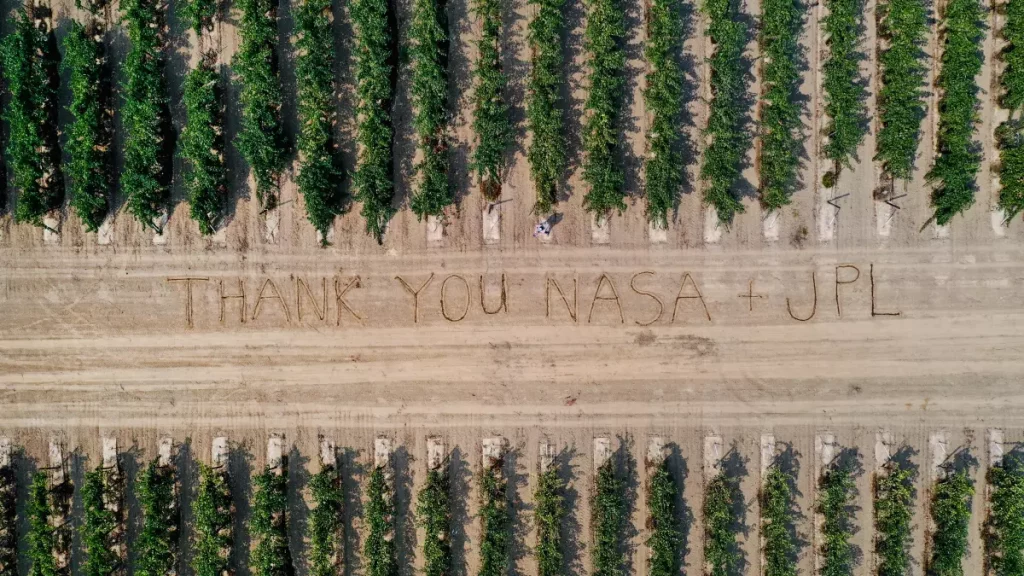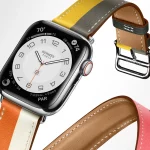New research has unveiled the remarkable potential of NASA’s cutting-edge imaging technology to detect early signs of any plant viruses, which has the potential to wreak havoc on wineries and grape growers. This innovative breakthrough is not only a boon for the wine and grape industry, which suffers staggering losses annually due to this destructive disease, but it also holds promise for revolutionizing global agriculture.
By employing intricate infrared imagery captured via aircraft flying over California’s Central Valley, scientists achieved the ability to identify Cabernet Sauvignon grapevines that were infected with the virus, even before visible symptoms manifested. Typically, growers can only spot the disease when it has reached an advanced stage and requires immediate action.
This groundbreaking technology, bolstered by machine learning and thorough ground analysis, exhibited impressive accuracy rates of nearly 90% in detecting infected plants, as indicated by two recent research papers.
Katie Gold, an assistant professor specializing in grape pathology at Cornell University and a key figure in the research, remarked, “This is the first time we’ve ever shown the ability to do viral disease detection on the airborne scale.” She further expressed the team’s aspiration to scale this technology to space.
NASA’s Jet Propulsion Laboratory is actively working on sending their airborne imaging instrument, known as AVIRIS-NG, into space. The research team envisions utilizing routine aerial images and data from the deployed instrument to monitor crops more extensively.
The potential implications of this venture, if realized globally, could have far-reaching benefits for the entire food supply chain. Early disease detection would enable targeted interventions, optimize resource allocation, reduce environmental chemical usage, and enhance overall sustainability from both ecological and financial perspectives.
Ryan Pavlick, a research technologist at JPL, cautioned that achieving this vision is still a distant goal, requiring further research before the spectrometer’s planned launch into space by the end of the decade. Nonetheless, the current study focused on vineyards, and the grapevine leafroll virus 3 (GLRaV-3) serves as a promising example of the technology’s transformative capabilities.
The leafroll virus is primarily transmitted by the endemic mealybug within vineyards, and once the disease takes hold, the only recourse is removal. This results in approximately $3 billion in annual damage and losses to the U.S. wine and grape industry.
Presently, growers can only detect the virus through labor-intensive vine-by-vine analysis and costly molecular testing, typically yielding results too late to prevent crop damage and spread.
Stephanie Bolton, the research and education director at the Lodi Winegrape Commission, an advocacy group for winegrowers that participated in the research, emphasized the financial devastation caused by this issue, stating that once symptoms become noticeable, the virus has often already spread widely throughout the vineyard.
To address this challenge, the research focused on identifying early infections, which led to the 2020 “wine tour” over Lodi vineyards. During this collaboration between JPL and Cornell University, the AVIRIS-NG spectrometer captured data from thousands of acres of vineyards, creating detailed maps of light reflection properties beyond the visible spectrum.
Utilizing this data, the research team developed and trained computer models to identify infections, while vineyard partners scouted for symptoms and provided samples. This collective effort, involving over 300 acres of vineyards over two years, yielded promising results.
Although the study concentrated on red grapes, there is optimism that asymptomatic detection could also be employed to identify the virus in white grape varieties, which are susceptible but more challenging to diagnose.
Katie Gold noted, “We’re really at a renaissance in the use of remote sensing in plant pathology,” emphasizing the potential to halt disease outbreaks before they escalate into epidemics, enabling growers to make more sustainable choices.
Despite the study’s success, expanding the project with additional airplane flights over the numerous vineyards in California and around the world is neither logistically nor financially viable. Hence, the researchers are setting their sights on space as the solution. Gold emphasized that space monitoring offers the unique opportunity to manage this issue at a regional community scale, given that vineyards border each other and space coverage spans a much larger area.
Read More:





 Apple Might Discontinue Leather Watch Bands and Phone Cases
Apple Might Discontinue Leather Watch Bands and Phone Cases